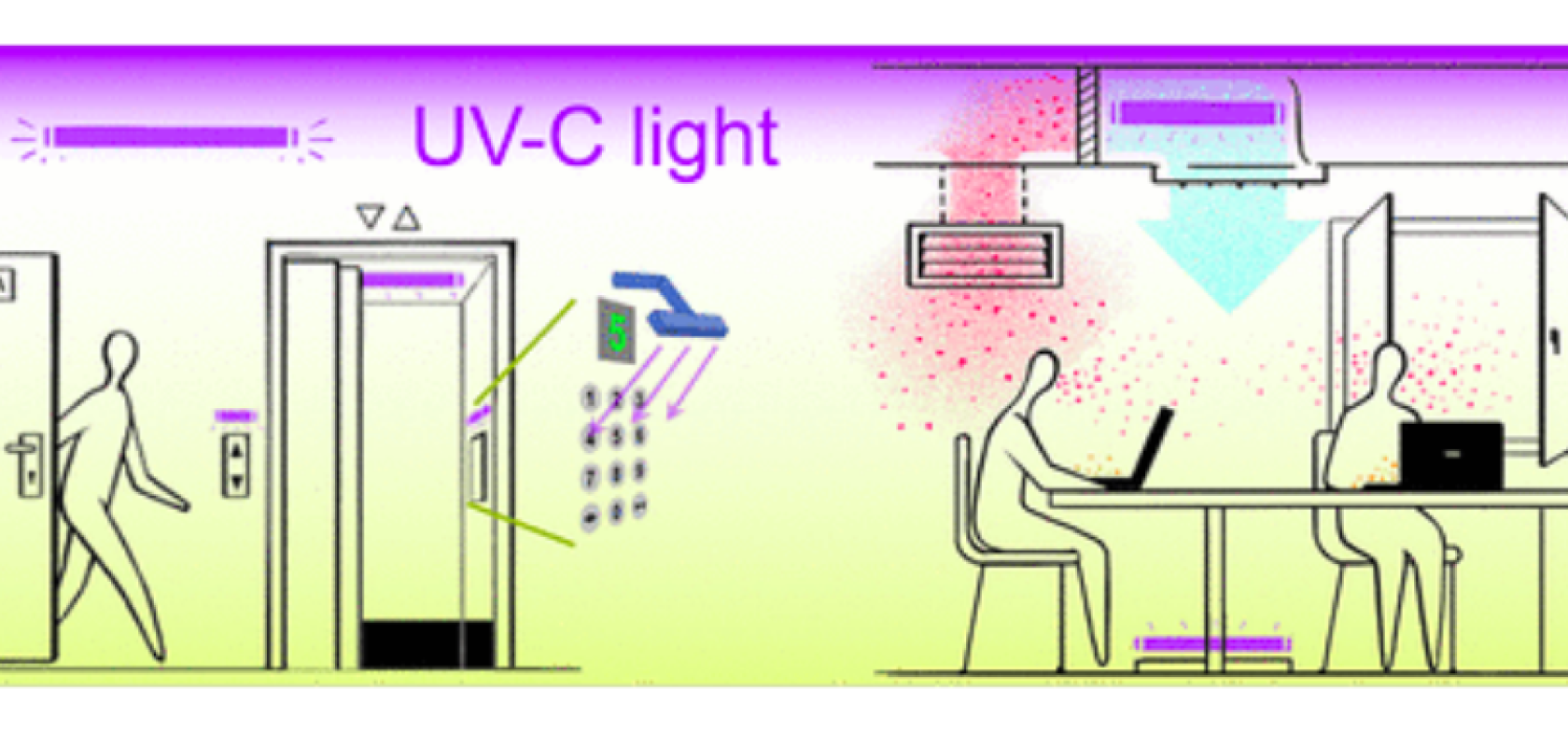A group of researchers have advocated for the use of ultraviolet light as a 'particularly efficient, easily deployable, and economically affordable' means to limit the spread of coronavirus.
The study, published 18 June in ACS Nano, involved experts in the fields of virology, immunology, aerosols, architecture, and physics, analyse the possible methods to prevent Sars-Cov-2 propagation in indoor spaces.
The authors include: Professor Javier García de Abajo at the Institute of Photonic Sciences (ICFO) in Barcelona, in collaboration with ICREA Professors Andreas Meyerhans (Universitat Pompeu Fabra) and Joan Rosell-Llompart (University Rovira i Virgili), together with Professors Rufino Javier Hernández (University of the Basque Country), Ido Kaminer (Technion), and Tilman Sanchez-Elsner (University of Southampton).
In the study, the authors suggest that small indoor spaces such as toilets, elevators, and office pantries, which are used only intermittently but involve a high turnover of people, could be protected through exposure to a high intensity of UVC radiation while not in use. The same approach could be used in public transportation, with periodic irradiation cycles after a certain number of stops or time of continuous use. A similar concept could be applied to motion-inactivated UVC illumination that would serve as a protective barrier in passageways and corridors.
It is also noted that frequently-touched surfaces, such as handles and handrails, could be directly and continuously exposed to weak UVC sources aimed at them, as they involve minor risk from eye irradiation or a limited exposure time on hands. For this, the authors suggest the use of handheld UVC devices for quick disinfection of these elements – and of surfaces in public transport vehicles – as an alternative to cleaning through more time-consuming conventional methods.
The use of UV light in room in ventilation systems is also discussed by the researchers.
The authors claim that UV light meets the requirements of fast, scalable, and affordable implementation to fulfill the needs of disinfecting working spaces, such as offices, schools, healthcare facilities, and public transportation.
The study gives information on the currently available UVC sources, such as fluorescent lamps, microcavity plasmas, and LEDs, emphasising that, by irradiating this type of light inside the ventilation systems of buildings and in shared indoor spaces while not in use, it is possible to quickly and efficiently deactivate airborne and surface-deposited Sars-Cov-2 viruses.
The researchers also explore costs and investments in deploying such technology and argue that a global capital investment of a few billion dollars in UV-C sources could protect of the order of ~10^9 indoor workers worldwide.
Link to paper in ACS Nano: here


